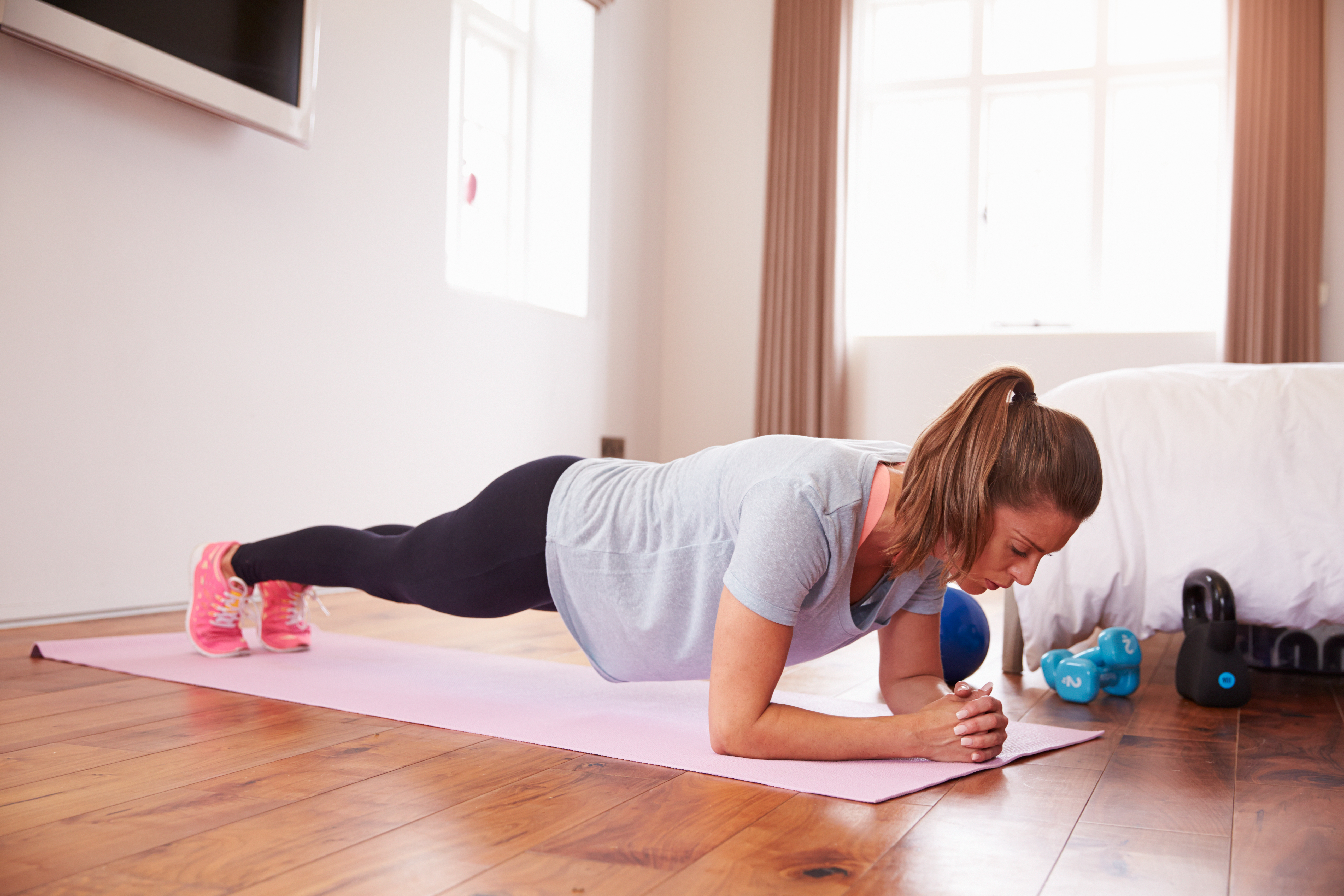I wish I’d known long ago that time spent in the gym can significantly improve the quality of the time spent in the saddle.
Being a petite woman with minimal muscling and strength, I was often told by my instructors to work out to get stronger. I took this to mean that I needed to be stronger to give stronger aids to my horse. Except for brief periods of jogging to quiet my instructors, I ignored the advice for years and continued to struggle with an off-center seat, poor posture, sore hips and a collapsed right side, thinking these faults would correct themselves if I just concentrated more or tried harder.

It was not until a longtime student of mine with similar position issues started to have better posture during her lessons. I asked how she was able to improve her posture after all this time, expecting an answer about motivation or concentration. I was surprised to hear that she had been going to a personal trainer and doing some core work. The next week I began with the same trainer. The results were fairly immediate. The most noticeable improvement was the reduction in hip pain as the surrounding muscles got stronger. Shortly afterward, it was apparent that I could center my seat and maintain control over the shifting of my weight. Before long, I was able to keep my shoulders back for longer and longer periods of time. Yes, I still hear “sit up” and “shoulders back” a fair amount in my lessons, however, I can now make the corrections.
Half halts are more effective now that I can use my new found abs to steady my position and bring the horse to me instead of getting pulled down to him. How had I gone this long knowing I needed a fit and strong horse and still not realizing the importance of my own fitness as a part of the athletic partnership?
Riding by itself is not sufficient exercise to develop the needed strength and flexibility to ride effectively. The rider must have enough muscle strength, coordination and suppleness to maintain a correct and balanced position in order to easily influence the horse. In the end, lighter aids are needed because the rider has better control over her body and is operating from a centered, strong and stable position.
While there are many styles and programs for keeping fit, some basic core fitness exercises fit into my schedule well. I am able to keep up with them even on the road as no equipment is needed. Over time I have found that exercises that isolate my right and left sides are very productive for allowing me to stay more centered in the saddle. Simple exercises like a back lunge or a side plank with a lateral leg lift have been most helpful. A short commitment of time off the horse can greatly improve the quality of time spent on the horse. I wish I had known the real value a strong core would bring to my riding.

Debbie Rodriguez is a USDF bronze, silver and gold medalist, a USEF Technical Delegate and a USEF “S” dressage and “r” eventing judge. She graduated from Lake Erie College with a dual major in equestrian studies and business administration. Based in Williamsburg, Virginia, she trains riders and horses to the FEI levels. Her website is debbierodriguezdressage.com.











